#Echinodermata
Text
Phylum Round 1
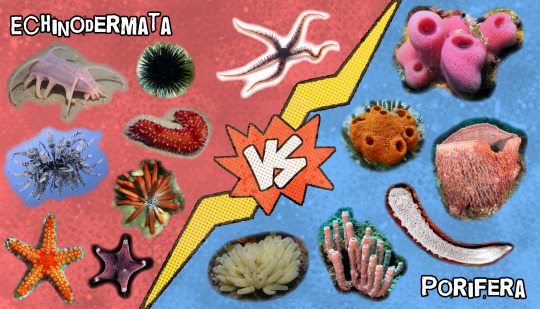
Echinodermata: Sea urchins, sea stars, sea cucumbers, brittle stars, and feather stars. This widespread phylum can be found near every continent, including Antarctica, where they are particularly dominant. They are distinctive for their radially symmetrical body and skeleton located between the outer skin and inner body cavity. They move by hydraulic power using a "water vascular system" which pumps water throughout their body. Hundreds of tube feet extend and retract using this system, allowing them to crawl on the seafloor. These organisms play important roles in the food chain of their habitats, like sea urchins grazing in kelp forests.
Porifera: Sponges. One of the oldest forms of animal life on Earth, Porifera represents an evolutionary transition to multicellular life. Their bodies are made up many individual cells, rather than having true tissues, but these cells work together as one organism. By beating specialized flagella (whip-like structures), Sponges create a water current through their many pores, so they may filter feed while living on the seafloor. Various species have developed unique adaptations, such as an internal skeleton of spikes, symbiosis with photosynthesizers, or potent toxins to ward off predators. Many Sponges produce unusual chemical compounds that may be useful to medical research.
#echinodermata#porifera#animal bracket#tumblr bracket#bracket tournament#poll bracket#phylum round 1#phylum
438 notes
·
View notes
Text
Basket Star.
#animals#critters#wildlife#cute animals#animal friends#wild animals#aquatic#sea creatures#fish#starfish#ocean life#marine life#sea life#unique#different#star#IndeedGoodMan#Basket Star#echinodermata#basket stars#fyp#tumblr#for you page
437 notes
·
View notes
Text
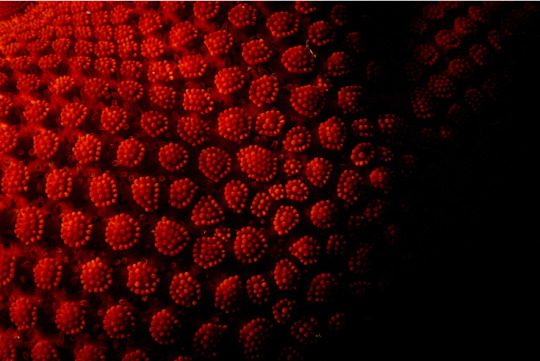
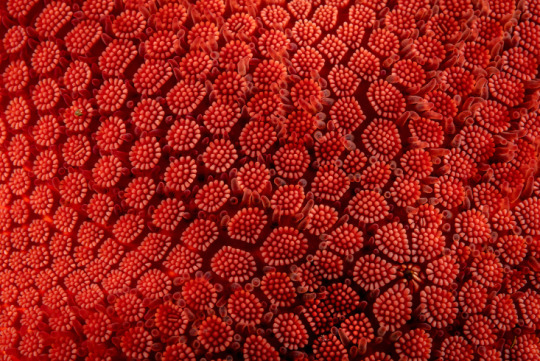

Close-up of the skin of a vermillion sea star (Mediaster aequalis)
Photos by Shane Gross
#Mediaster aequalis#Mediaster#sea star#vermillion sea star#marine#sea#marine life#marine invertebrates#ocean#echinoderms#echinodermata#red#red sea star#animals#wildlife#macro photography#nature
356 notes
·
View notes
Text
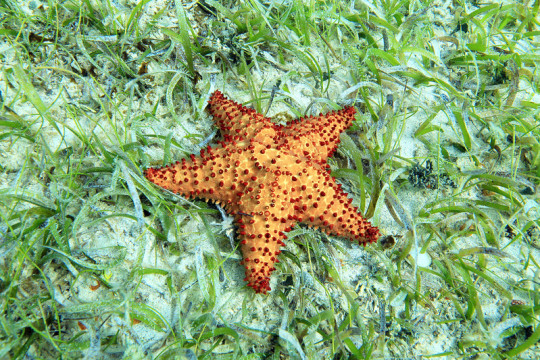
A red cushion sea star (Oreaster reticulatus) in Rendezvous Bay, Saint John, Virgin Islands
by Alan Cressler
#red cushion sea star#starfish#echinoderms#oreaster reticulatus#oreaster#Oreasteridae#Valvatida#Asteroidea#echinodermata#wildlife: virgin islands#wildlife: north america
82 notes
·
View notes
Text
Phylum #6: Echinodermata!

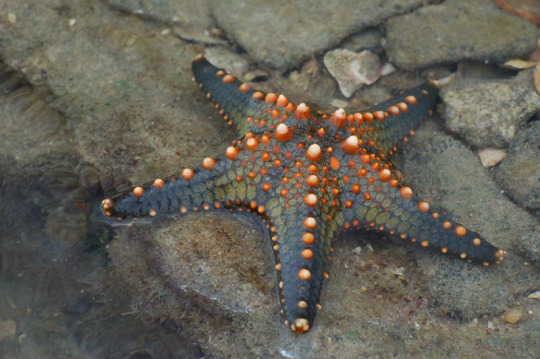

Starfish! And sea urchins, sea cucumbers and other little creatures! All of them are united by having a hard skeleton made of tiny elements called ossicles. They also have hundreds of little tube feet, powered by a entirely water pressure-based vascular system!
They're also pretty unique among bilaterians for having switched their usual bilateral symmetry for a five-way one (yes, urchins have a five-pointed star under their spikes!). Even weirder, some of them like sand dollars and sea cucumbers switched again, and got their bilateral symmetry back!
Most echinoderms are pretty familiar, but some can take on pretty unique shapes. Crinoids are filter-feeders shaped like large feathered tufts - some fixed on a stalk, while other can walk or even swim by themselves, undulating through the ocean. Until the Jurassic, reefs and rafts of crinoids floating on driftwood were extremely common, at the heart of most marine ecosystems!
Sea cucumbers are also known to exhibit quite interesting forms among echinoderms, with Pelagothuria being nearly jellyfish-like in appearance!


#forms and phyla#echinodermata#starfish#brittle star#sea urchin#sea cucumber#sea lily#crinoid#sea life#sea creatures#marine life#marine biology
259 notes
·
View notes
Text
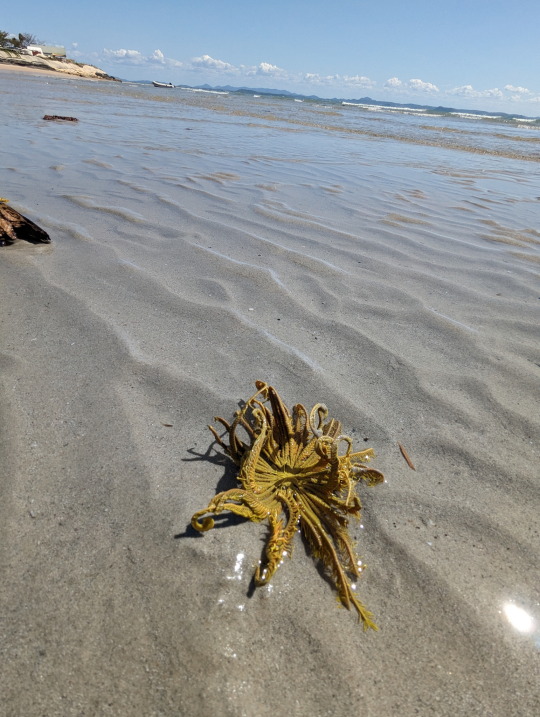
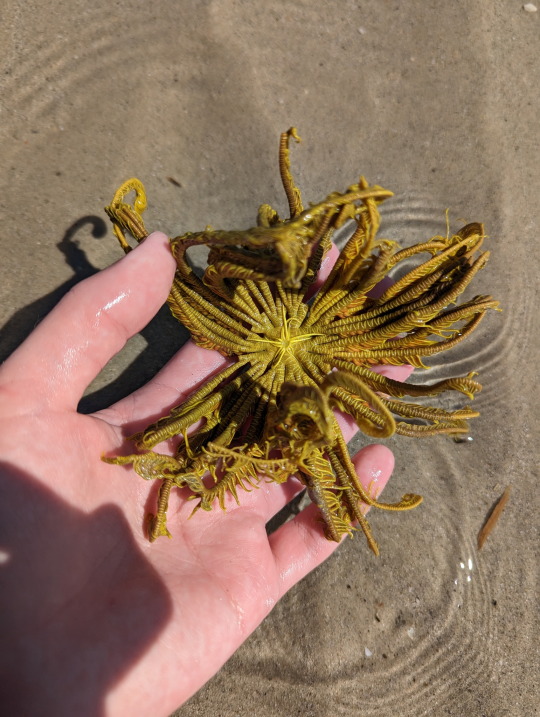
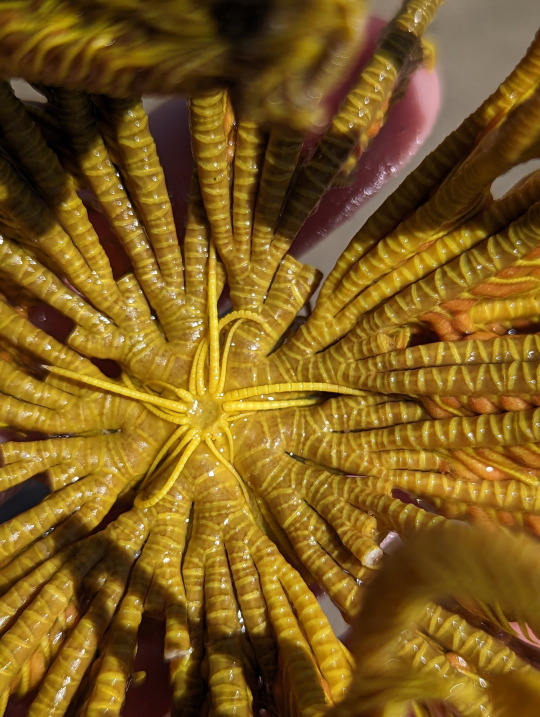



Washed up Echinoderm, currently identified as a sea lilly.
13/09/23 - Comasterini sp.
QLD:CQC - Woppa (Great Keppel Island), ocean shore
#invertebrates#invertblr#Comasterini#Comatulida#Feather Stars#Crinozoa#Sea Lilies#Echinodermata#Echinoderms#unidentified#dead tw
96 notes
·
View notes
Text

#sea cucumbers#acamemeia#biology#holothuroidea#echinoderm#echinodermata#sea cucumber#the one on the right is my pic!! his name is doppler
12 notes
·
View notes
Text
*Nope (movie) spoilers ahead!!!*
I will now post my rambles about the various similarities Jean-Jacket has with with the phylogenetic group of Echinodermata.
It seems obvious that Jean jacket is inspired by some kind of sea life. The very way it moves, swimming around the sky.
Many have compared its final form to jellyfish or something similar, and while I do not disagree, I would like to propose something different.
First of all, let me explain what Echinoderms are.
Echinodermata is a biological group, including starfish, brittle stars, sea urchins, sand dollars, sea cucumbers and sea lilies.
Now to the similarities:
UFO stage:
Jean Jacket feeds 2 ways.
One: it sucks in air, along with whatever debris and/or food comes with
This is also something a lot of marine species do! It’s called filter feeding.
This feeding tactic is also what sea urchins do! They filter through the central hole:
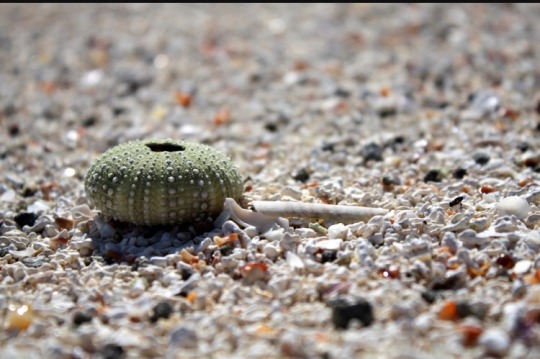
See the similarities?
Now you might think: well, that’s not really how Jean-jacket looked.
Well, how about this?
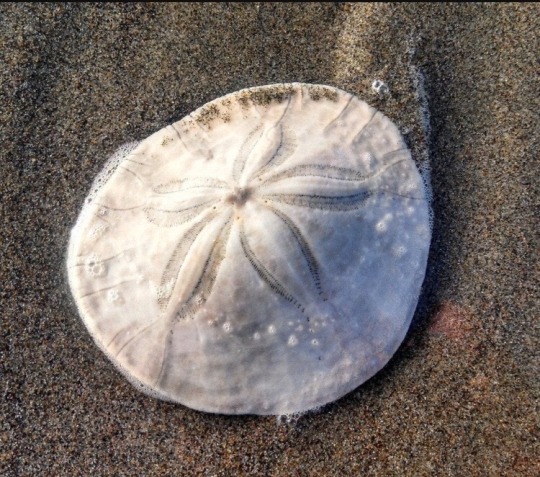
Looks a bit closer, doesn’t it? That’s a sand dollar, although a dead one. But that’s what most people picture when they think of one.

Here another picture, for reference. As well as a very good example of Jean jacket filter feeding.
Okay, now to move on to Jean jackets other form. Wether that was supposed to be a sort of ‘evolution’, or something it did because it was angry/threatened, I don’t know.
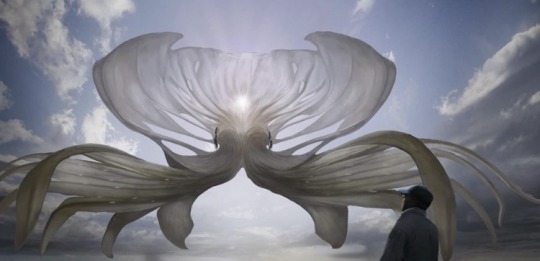
Here it is!
Now, a different group of Echinodermata, the feather stars.

See some similarities? (Also please not how damn cool feather stars are)

Here, have another because I adore them.
But alas, I have more than mere comparison of physique!
The hunting strategy!
Of course, for marine species, it is very popular to do what Jean-jacket is doing. Floating around safely, and swooping down to the ground to devour pray, who may not get away fast enough, or be able to get away at all.
So that is not very specific for the group I am about to mention, although they sure do it.
No, what I mean is way number 2 that Jean jacket eats what it considers prey.
Sadly I am unable to find a screenshot, but in it’s final form, trying to eat the giant cowboy ballon, Jean jacket envelops it while simultaneously shoving it towards its central hole.
You know who else does that?
Fucking sea stars!
Because they have a really cool thing called a cardiac stomach.

Basically, they can eject it, and envelope larger prey, to either pull inside, or digest outside of its body cavity.
(It can also use it to slip into a crack in a imperfectly closed mussel shell, and slurp the terrified prey right out, which I must say is quite the power move)
As you might notice, most of the sea creatures I have shown you pictures of poses radial symmetry. Actually, it is penta radial symmetry, which may be hard to notice in some though.
While I cannot see any markings on Jean Jackets UFO form that could confirm or debunk the idea of penta radial symmetry, the radial symmetry part sure seems to fit.
But Charlie, you might say, the last stage of Jean Jacket seemed to have a clear front and back. Doesn’t that mean it possesses bilateral symmetry?
Yes! You are right! It seemed to have its body opening at the ‘front’

First of all, there is something about the symmetry of Echinodermata that you should know.
Yes, they are penta radially symmetric, but they haven’t always been.
They have actually secondarily lost their bilateral symmetry in the adult stage, but their larva still have it.
Meaning that it is not too far off to assume a different stage of Jean jacket might have a different symmetry as well.
But that aside, I want to show you another group, or more a specific species from that group that has some stunning similarities.
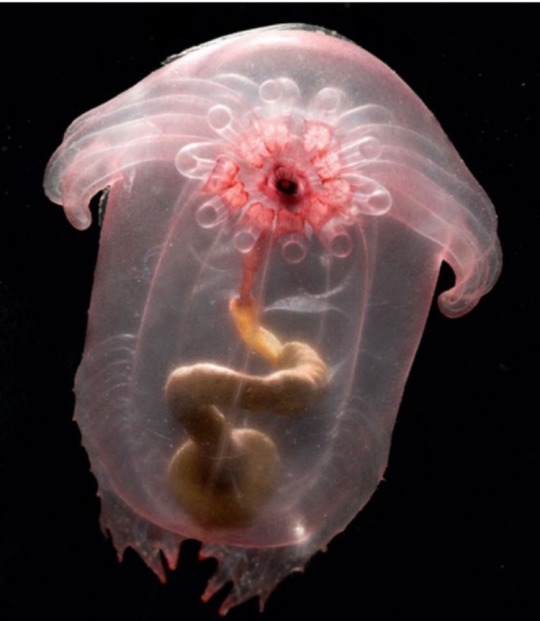
This specific deep-sea sea cucumber.
I rest my case. I think it’s clear that the creators have either knowingly or unknowingly created a lot of similarities and parallels between Jean Jacket and the Echinoderms.
As you can see I am very excited about that.
#nope movie#long post#listen I know this is useless but it was fun sooo#echinoderms#Echinodermata#should I tag this as autism? lol. cos I think it might count#XD#marine biology#Jean jacket#Jean jacket nope#nope spoilers#nope 2022#listen i know the filmmaker admitted its about jellyfish but let a guy dream
63 notes
·
View notes
Text
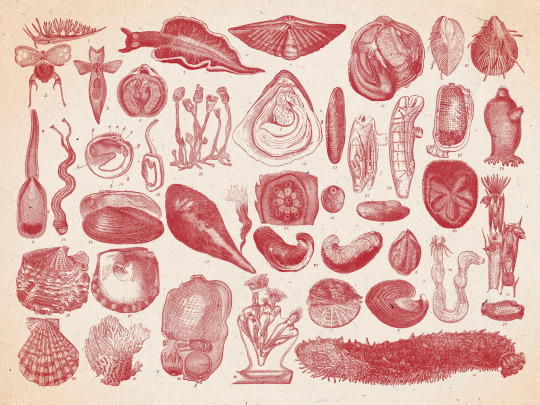
Mollusca and echinodermata engraving - 1882.
#vintage illustration#engraving#mollusks#marine life#marine biology#mollusca#echinodermata#sea urchins#sand dollars#sea cucumbers
7 notes
·
View notes
Text
Phylum Round 3
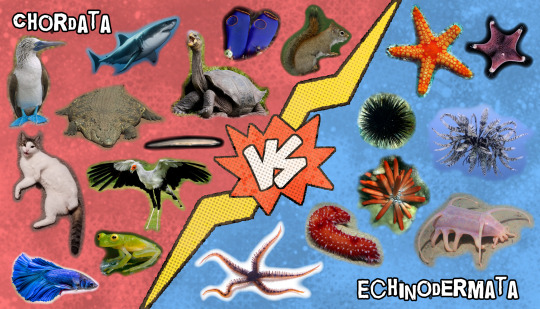
Chordata: All animals with a backbone (Vertebrata), but also some invertebrates. Chordata includes fish, birds, mammals, reptiles, and amphibians, but also sea squirts and lancelets. All Chordates have a notochord (supportive rod-like structure), a hollow dorsal nerve cord, pharyngeal slits (for filter feeding/breathing), a post-anal tail, and an endostyle (feeding organ) or thyroid (hormonal gland). Interestingly, many Chordates have overcome the need to raise their young in water by laying shelled eggs or carrying young within the womb. Fur, feathers, and scales are all unique adaptations found within Chordata. This phylum exhibits remarkable diversity overall.
Echinodermata: Sea urchins, sea stars, sea cucumbers, brittle stars, and feather stars. This widespread phylum can be found near every continent, including Antarctica, where they are particularly dominant. They are distinctive for their radially symmetrical body and skeleton located between the outer skin and inner body cavity. They move by hydraulic power using a "water vascular system" which pumps water throughout their body. Hundreds of tube feet extend and retract using this system, allowing them to crawl on the seafloor. These organisms play important roles in the food chain of their habitats, like sea urchins grazing in kelp forests.
#chordata#echinodermata#animal bracket#tumblr bracket#bracket tournament#poll bracket#phylum round 3#phylum
110 notes
·
View notes
Text

Maennilia
Maennilia — рід вимерлих голкошкірих з класу Soluta відомий з пізнього ордовика Естонії, близько 450 мільйонів років тому. Типовий вид — Maennilia estonica.
Повний текст на сайті "Вимерлий світ":
https://extinctworld.in.ua/maennilia/
#maennilia#ordovician#estonia#echinodermata#paleontology#paleoart#prehistoric#animals#палеоарт#палеонтологія#ukraine#ukrainian#illustration#article#digital art#prehistory#science#animal art#fossils#artist on tumblr#art#українська мова#україна#тварини#наука#мова#арт#український tumblr#українцівтамблері#український тамблер
19 notes
·
View notes
Text

Sea stars of British Columbia by David Hall
#sea stars#starfish#echinoderms#echinodermata#purple#orange#red#yellow#brittle stars#marine#ocean#sea#marine life#marine invertebrates#reef#coral reef#nature#animals
12 notes
·
View notes
Text
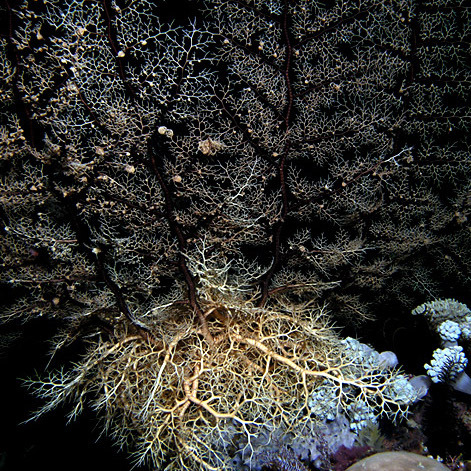
A basket star (Astroboa granulatus) unfurling at night to feed on plankton in East Timor
by Nick Hobgood
#basket stars#brittle stars#echinoderms#astroboa granulatus#astroboa#Gorgonocephalidae#Phrynophiurida#Ophiuroidea#echinodermata#wildlife: east timor#wildlife: asia
142 notes
·
View notes
Text
me writing fanfic: you know what would make this gay pirate story more appealing to wider audiences? slipping in random facts about sea urchin jaws and the biology of sexual deception in orchids! surely the crowds will go wild.
#writeblr#ofmd#science communication#entomology#echinodermata#ophrys#hey bee mimic orchids are such a good metaphor for... something
37 notes
·
View notes
Text
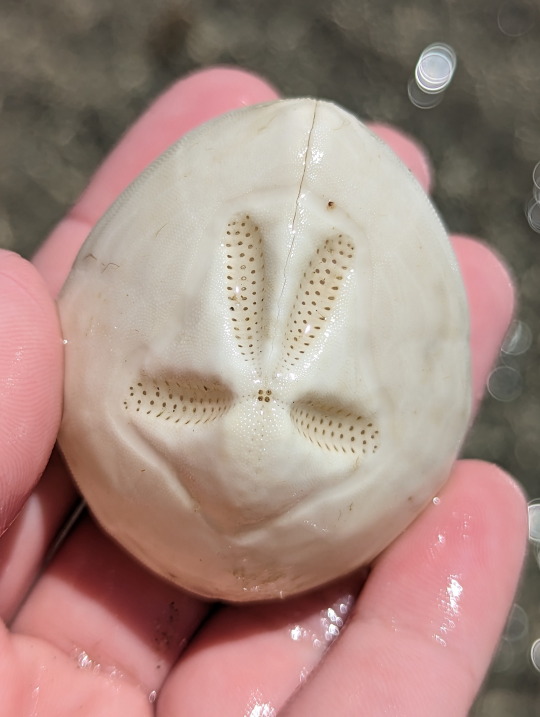

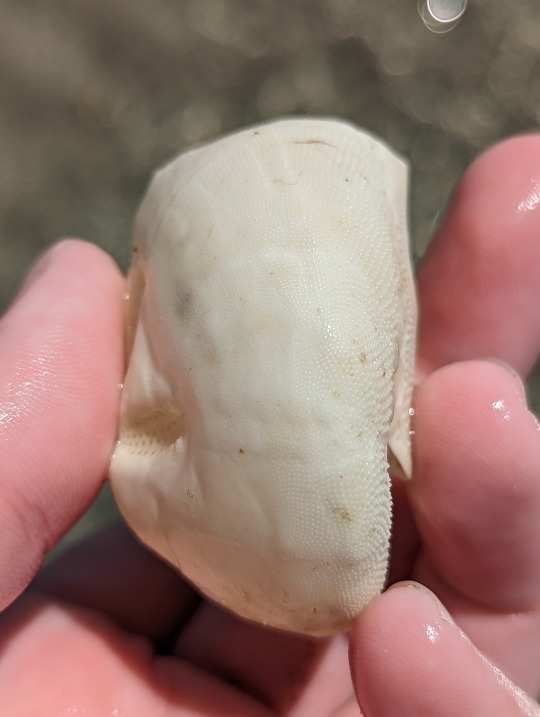

Remains of a Heart Urchin.
13/09/23 - Rhynobrissus sp.
QLD:CQC, Woppa (Great Keppel Island), ocean shore
#invertebrates#invertblr#Rhynobrissus#Heart Urchins#Euechinoidea#Sea Urchins#dead tw#unidentified#Echinodermata#Echinoderms
49 notes
·
View notes
Text
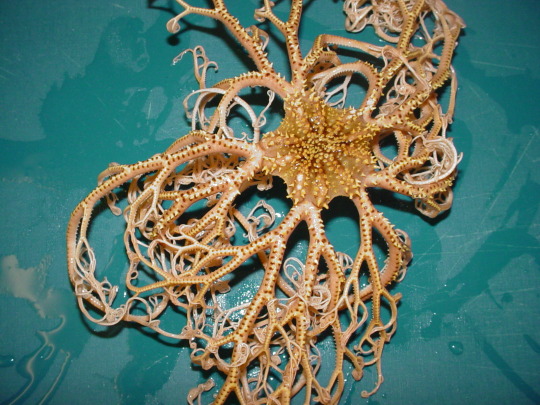
Basket star
#basket star#brittle star#serpent star#sea star#wikipedia#wikipedia pictures#nature#animals#wikimedia commons#marine biology#marine biodiversity#atlantic ocean#ocean creatures#ocean life#sea life#marine animals#marine life#echinoderm#echinodermata#sea aesthetic#oceancore#ocean aesthetic#ocean animals#ocean critters#sea animals#sea creatures#sea critters#marine creatures#marine critters#starfish
17 notes
·
View notes